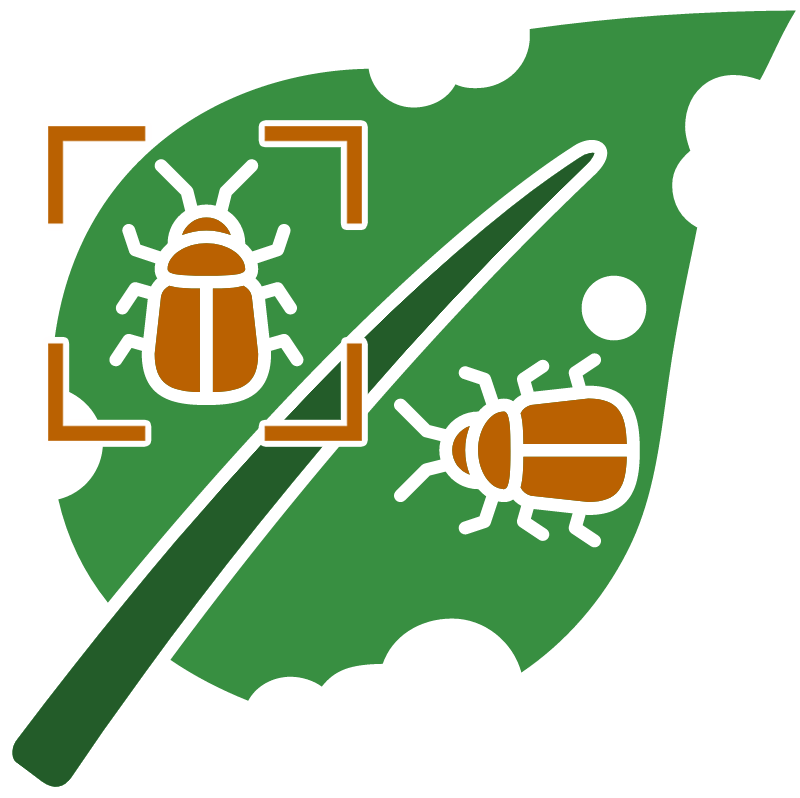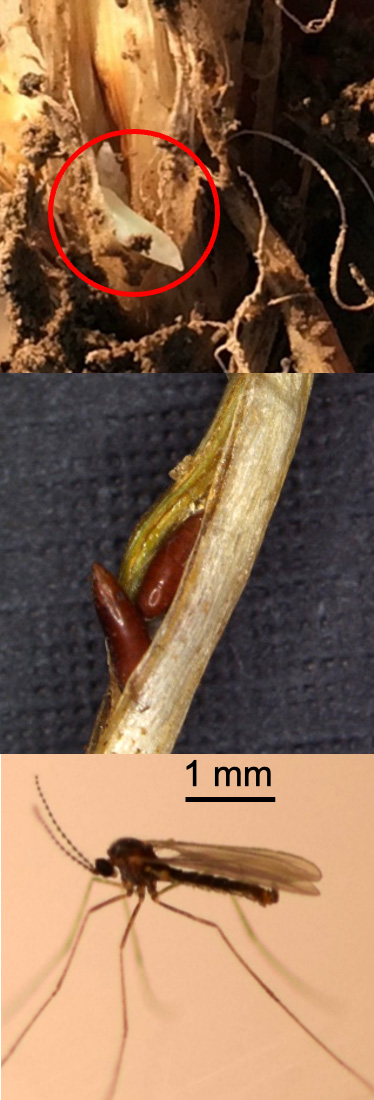Hessian fly (Mayetiola destructor)
Biology and life history: Adults are mosquito-like dark brown to reddish flies, approximately 1/8 inch long (see image). The adults do not feed and die within a few days after emergence. Females can lay up to 300 eggs that are cylindrical and orange in color. The larval stage is the only damaging stage of Hessian flies. Larvae are white in color and (see image). Puparia (AKA “flaxseed”) are spindle-shaped, shiny brown and 1/8 inch long (see image).
Host plants and crop damage: Hessian flies infest a wide range of cultivated and non-cultivated grass hosts. Wild grasses such as quackgrass, western wheatgrass, ryegrasses, jointed goatgrass, and timothy are examples of non-cultivated hosts for Hessian fly. Spring grains have a higher risk of infestation than fall-seeded small grain. Oats are not infested, but Hessian flies can infest and develop on susceptible wheat, barley, and rye. Eggs are deposited on the upper surface along the veins of leaves. After the egg hatch, the larvae move and start feeding once in the crown. Infested seedlings are darker in color, stunted, and may die. As the crop matures, infested plants are susceptible to lodging. There one to three generations of Hessian flies in the Pacific Northwest. They overwinter as puparia.
Management: Using resistant wheat cultivars is the most effective approach to prevent Hessian fly damage. However, resistance could break down if there are any changes in population genetics of fly Delayed fall planting, controlling weeds and volunteers, and cultivation are examples of cultural control methods. Neonicotinoid seed treatments may provide some relief, especially earlier in the season. There is only a small timeframe for foliar insecticides to be effective, and that is when the adults are present or before the egg hatch. See the PNW insect pest management handbook for more details.

